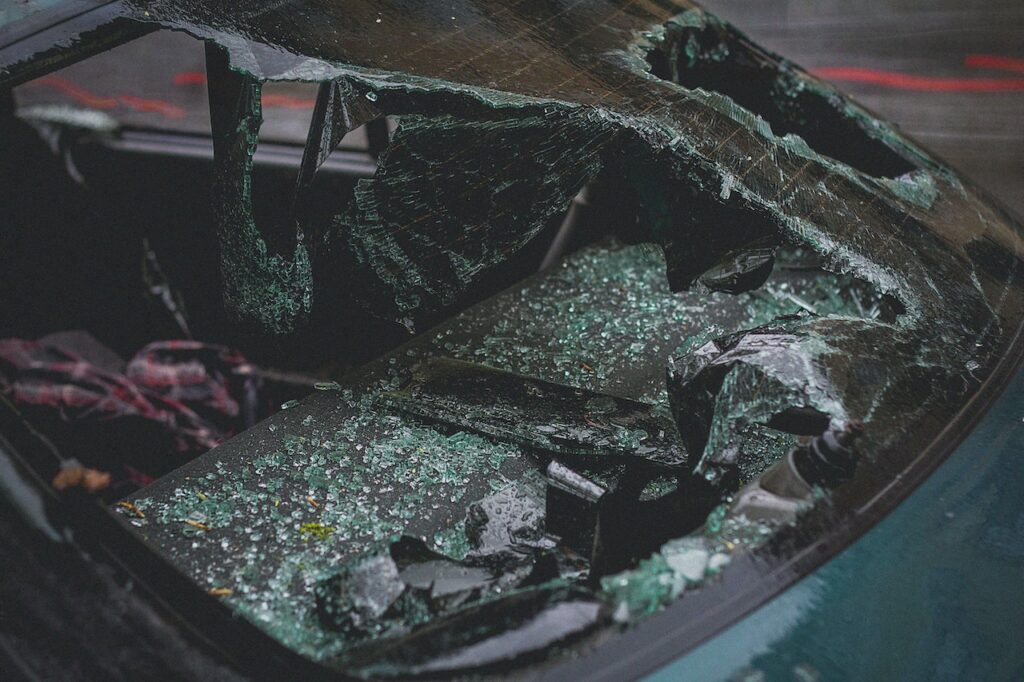Damages to Expect After Crashing Your Car

Car Accident
When you’ve been in a car accident, hundreds of things are already going through your mind; is everyone okay? Has anyone been hurt?
How am I going to get to work? Other thoughts are likely to be occupying your mind.
That’s why it’s important to be prepared in the event of an accident, and one way to do so is to know what damages to look for on a car when it’s been crashed into.
In this article, read on for an overview of the damage you’ll want to be on the lookout for when taking pictures for insurance and considering how much it will cost to repair.
Identify the Parts of Your Vehicle Most Likely to be Damaged in a Car Accident
Car accidents can be incredibly devastating; unfortunately, damage to our vehicles will almost certainly be part of it.
While any part of your vehicle can be damaged in a collision, some are more susceptible than others.
For example, the front and rear bumpers are designed to take the brunt of an impact, but they can still sustain significant damage.
Similarly, the fenders, hood, doors, and trunk are also commonly damaged in car accidents.
Lastly, especially in more severe accidents, your tires and wheel housings are going to need serious repairs before you’re good to get back on the road.
Being prepared with this information ahead of time can be at least a small stress off your mind when trying to cope with an accident.
Learn How to Inspect Your Vehicle for Damage After a Collision
If you’ve recently been in a fender bender or a more serious collision, thoroughly inspecting your vehicle for damage is important.
Even if the damage seems minimal, underlying issues could need to be addressed before you hit the road again.
Start by closely examining your vehicle’s exterior and checking for scratches, dents, or any other signs of impact.
Then, pop the hood and inspect the engine and other components for any damage that could affect your car’s performance.
No one wants to deal with unexpected repair costs down the line, so taking the time to inspect your vehicle after a collision is an essential step in ensuring your safety on the road.
Know When to Take Your Vehicle to the Mechanic for Repairs
Even if an accident is minor, it’s important to take your car to a repair shop for an inspection quickly after an accident.
Paying attention to the warning signs can save you time and money and potentially prevent a major safety issue.
If your vehicle is making strange noises or vibrations, has a decrease in performance, or has warning lights on the dashboard, it may be time to schedule a trip to the mechanic.
Ignoring these signs can lead to costly repairs or even accidents on the road.
Some mechanics, such as Touch Up Pro, specialize in fixing small cosmetic issues and can often point you to more detailed care if needed.
It’s important to prioritize the safety of yourself and others by taking care of your vehicle and addressing any issues promptly.
So, even if you think your car is fine, make sure you take it in for a look, just in case.
Make Necessary Repairs and Replace Damaged Parts Quickly
Getting in an accident is going to cost you a great deal of money, especially if you were responsible for causing it.
However, it’s important to get your car repaired quickly, regardless of the cost.
While it may be tempting to see how long you can put off getting repairs done, it increasingly creates a further risk to your vehicle as well as other drivers when your car isn’t in top condition.
Also, being caught with a malfunctioning car when you need to make it to work will only put you in more financial trouble.
Do yourself a favor and make sure your care is taken care of quickly after an accident; your future self will thank you.
While getting into a car accident is an unfortunate situation, and most people want to avoid it, knowing what to expect and how to handle the damaged parts of your vehicle is key.
By being aware of the common injuries that can occur to your car during an accident, you can make sure they are identified quickly, whether by self-inspection or examination by a mechanic.
You also need to keep in mind what type of replacement parts you need and be selective when buying them.
Taking these steps will help you get back on the road as safely and quickly as possible.
In addition, practicing basic safety habits such as wearing your seatbelt, following the speed limit, and leaving enough distance between yourself and other cars can help prevent accidents altogether.
Remember that basic precautions, in combination with knowing how to handle damage after a collision, will save you time and money.
Category: Cars




